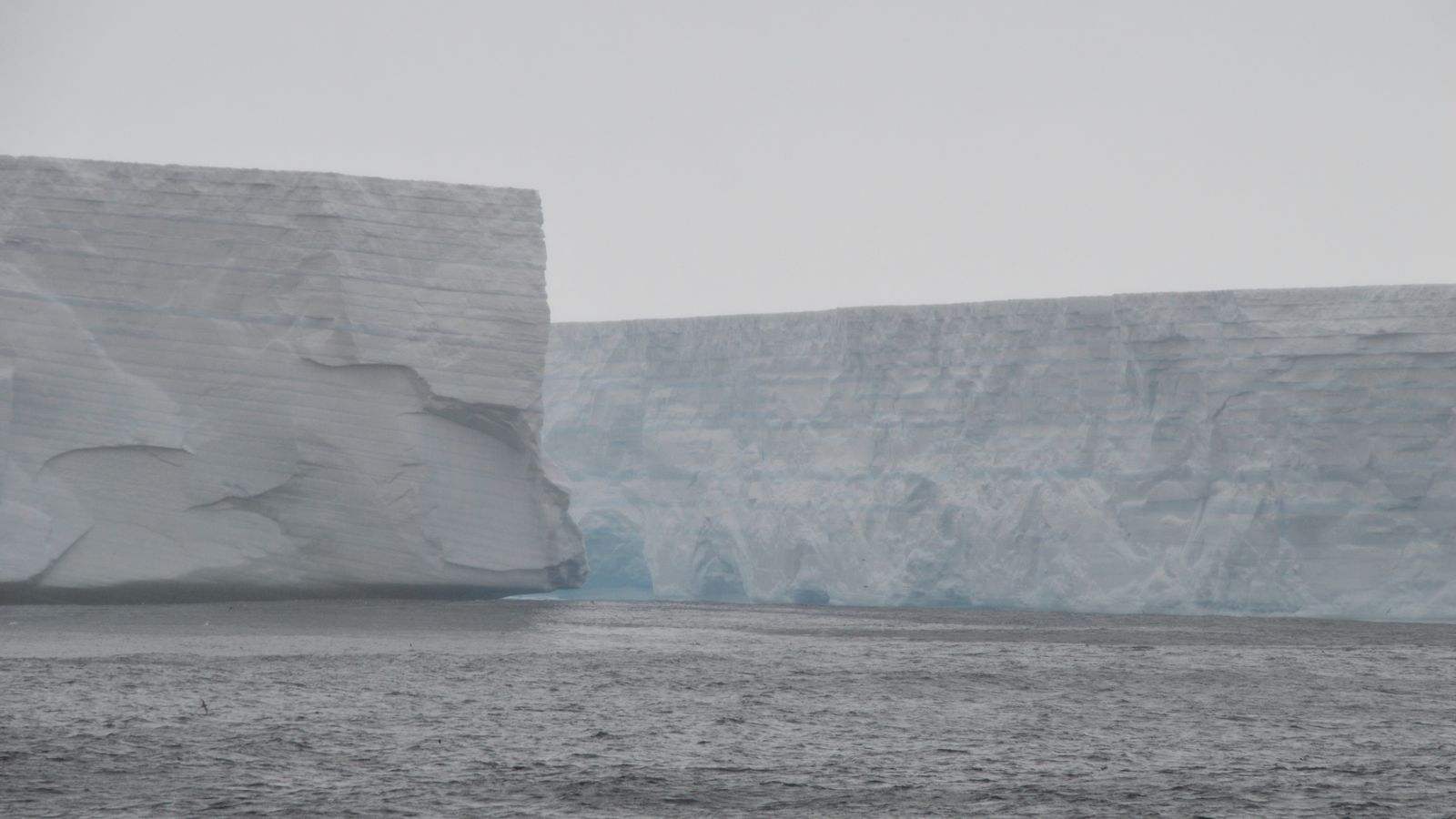British scientists are tracking two of the world’s biggest icebergs – one as big as Greater London and the other almost the size of Cornwall.
The icebergs – named A81 and A76a – broke away from Antarctica, with the latter heading towards South Georgia. Scientists say they could affect wildlife and fishing.
The A76a is 135km long and 25km wide and is the largest floating iceberg on the planet. At more than 3,000 square kilometres, it is almost the same size as Cornwall.
The large chunk of ice, shaped like a giant ironing board, is one of three pieces from the A76 iceberg which broke away from Filchner-Ronne Ice Shelf in May 2021.
The British Antarctic Survey (BAS) has also released the first aerial pictures of the A81 after it broke away from the Brunt Ice Shelf in late January.
Measuring 1,550 square kilometres, it is almost the size of Greater London and is floating some 15km away from its origin. The Brunt Ice Shelf is home to the BAS Halley Research Station and is one of the most closely monitored ice shelves on the planet.
Where are they heading?
Scientists say the A76a could destroy fauna across the seabed floor and disrupt the ocean currents if it grounds on the shallow seabed in the region on its way towards South Georgia.
There are also concerns for fishing vessels as the iceberg begins to break down into smaller chunks.
Read more:
Pembrokeshire floating wind farm gets Welsh government backing
Proposed ‘Hydrogen Village’ which could see homes swap gas for hydrogen
Professor Geraint Tarling, head of the ecosystems team at BAS, said: “An iceberg of this size will have a big impact on the ocean ecosystems which support the rich diversity of marine wildlife found in this Antarctic region.”
He said this may have positive impacts as melting will release nutrients which could help microscopic plants.
However, he adds it could also have negative impacts as large scale melting dumps lots of freshwater decreasing salinity levels and makes the waters “unsuitable” for many phytoplankton – which could effect other parts of the food web including fish, birds and whales.
Dr Mark Belchier, from the government of South Georgia and the South Sandwich Islands, said the “major” concern is the possible risk for vessels operating in the region as the iceberg begins to break up.
Be the first to get Breaking News
Install the Sky News app for free
The BSA says icebergs around South Georgia are not uncommon.
In 2021, the A68A iceberg reached the southern shelf of the island but rapidly melted as it approached South Georgia, releasing 153 billion tonnes of freshwater, the BAS said.







